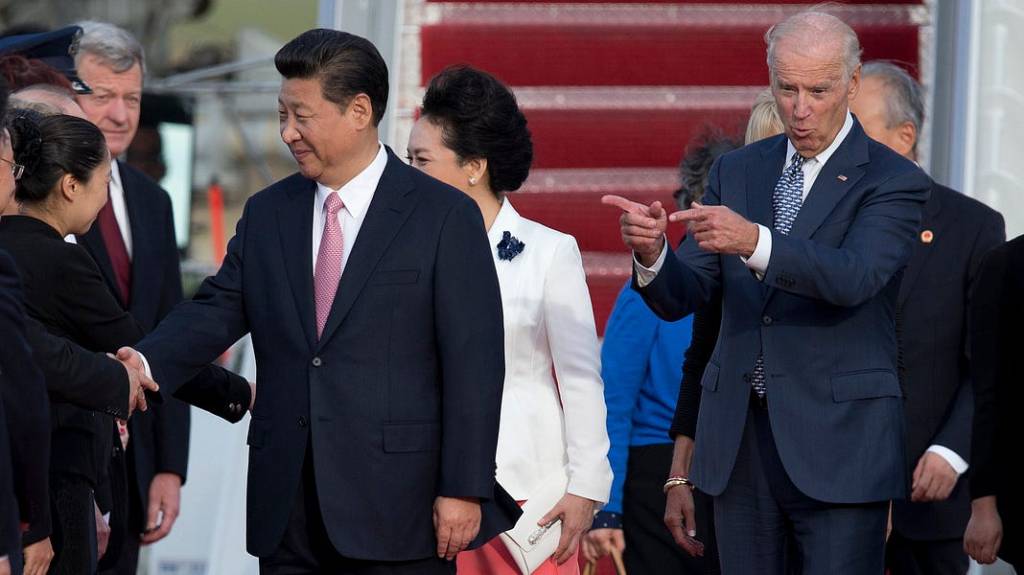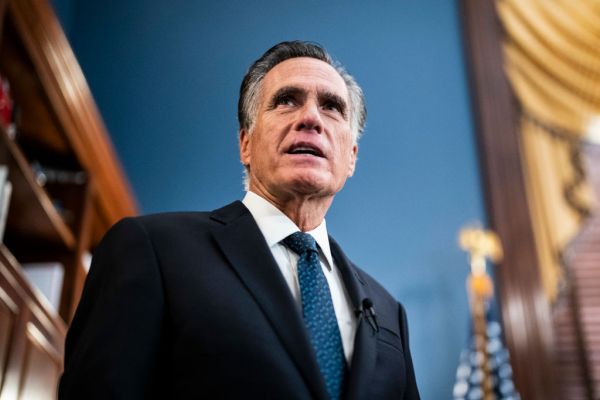Biden’s China-Tech Policy Taking Shape
What’s New: New strategies and initiatives provide the outline of what President Biden hopes to accomplish when it comes to China and technological competition.
Why This Matters: In many ways, China policy is the center-of-gravity for American foreign policy — we either get it right or we’re going to get everything else wrong.
Key Points:
-
The White House has issued its Interim National Security Strategic Guidance, that says the following:
China, in particular, has rapidly become more assertive. It is the only competitor potentially capable of combining its economic, diplomatic, military, and technological power to mount a sustained challenge to a stable and open international system … We will confront unfair and illegal trade practices, cyber theft, and coercive economic practices that hurt American workers, undercut our advanced and emerging technologies, and seek to erode our strategic advantage and national competitiveness … We will ensure that U.S. companies do not sacrifice American values in doing business in China … We also recognize that strategic competition does not, and should not, preclude working with China when it is in our national interest to do so. Indeed, renewing America’s advantages ensures that we will engage China from a position of confidence and strength.
-
In his first major speech, Secretary of State Antony Blinken echoed this strategy, saying China is “the biggest geopolitical test of the 21st Century.”
-
The Financial Times also reports Biden wants to create what Dean Acheson called “situations of strength,” where allies closely cooperate on strategic challenges. In Asia, this means strengthening “the Quad” — a group that includes Australia, India, and Japan — that would use security cooperation and public diplomacy to counter Chinese influence in the region. In Europe, the Administration reportedly feels that, while there is a growing consensus on the need to confront China, agreement on how to do this remains elusive, with one observer saying the following:
There’s a real geopolitical play to leverage Europe to shape China. But that is different from some kind of Kissingerian approach to get Europe to align with the US against China … We shouldn’t expect to see Biden, Merkel and Macron standing up and saying, ‘We will work together Yalta-style to balance Chinese power’.
-
Making all of this more tangible, Biden will reportedly allow a Trump-era rule targeting Chinese tech threats to go into effect later this month that allows the Secretary of Commerce to ban technology business transactions that are deemed a threat to national security.
-
Relatedly, the US is seeking closer partnerships with Taiwan’s key semiconductor companies after Biden issued an executive order requiring a comprehensive review of US technological supply chains.
-
Finally, Congress is joining the effort. Last week, a bipartisan bill led by SEN Mark Warner (D-VA) was introduced that would create a new agency at the Department of State focused on building tech alliances with other democratic nations and funds a $5B fund to support R&D projects between the government and universities, tech companies, and businesses in partner nations.
What I’m Thinking:
-
Credit where credit is due. So far, the Biden administration seems to be acting thoughtfully, coherently, and aggressively when it comes to tech and great power competition with China. Sure, I have policy differences and there are things I’d encourage us to do differently; but, these are well within the bounds of normal policy disagreements. It should also be said that, while the tone and tenor of the Biden administration is considerably less bombastic, the overall contours of these efforts generally align with its predecessor’s policy objectives.
-
This is a long game. In many ways, these are the easy days. China is largely waiting to see what the new administration will do. As the Biden strategy gets implemented, Beijing will respond and we’ll begin the new “great game.” If everything goes according to plan, we can expect a more aggressive response from China in the near- to mid-term — including efforts that pressure our alliances and our economy. This is when the White House will show its true colors by either seeing this strategy through or by looking for off-ramps to lessen the pain.

AI Commission Issues Its Final Report
What’s New: The National Security Commission on Artificial Intelligence has issued its final report — all 754 pages of it!
Why This Matters: The commission was created by the 2019 NDAA (P.L. 115-232), “to consider the methods and means necessary to advance the development of artificial intelligence, machine learning, and associated technologies to comprehensively address the national security and defense needs of the United States.”
Key Points:
-
The report begins with this arresting assessment:
America is not prepared to defend or compete in the AI era. This is the tough reality we must face. And it is this reality that demands comprehensive, whole-of-nation action … The U.S. government cannot do this alone. It needs committed partners in industry, academia, and civil society. And America needs to enlist its oldest allies and new partners to build a safer and freer world for the AI era.
-
It then identifies four areas where the US must focus:
Leadership. Ultimately, we have a duty to convince the leaders in the U.S. Government to make the hard decision and the down payment to win the AI era. In America, the buck stops with the President, and AI strategy starts in the White House. We built a National Security Council to confront the challenges of the post–World War II era. Now we need to create a Technology Competitiveness Council to build a strategy that accounts for the complex security, economic, and scientific challenges of AI and its associated technologies. That leadership imperative extends into all critical national security departments and agencies.
Talent. The human talent deficit is the government’s most conspicuous AI deficit and the single greatest inhibitor to buying, building, and fielding AI-enabled technologies for national security purposes. This is not a time to add a few new positions in national security departments and agencies for Silicon Valley technologists and call it a day. We need to build entirely new talent pipelines from scratch. We should establish a new Digital Service Academy and civilian National Reserve to grow tech talent with the same seriousness of purpose that we grow military officers. The digital age demands a digital corps. Just as important, the United States needs to win the international talent competition by improving both STEM education and our system for admitting and retaining highly skilled immigrants.
Hardware. Microelectronics power all AI, and the United States no longer manufactures the world’s most sophisticated chips. We do not want to overstate the precariousness of our position, but given that the vast majority of cutting-edge chips are produced at a single plant separated by just 110 miles of water from our principal strategic competitor, we must reevaluate the meaning of supply chain resilience and security. A recent chip shortage for auto manufacturing cost an American car company an estimated $2.5 billion. A strategic blockage would cost far more and put our security at risk. The federal investment and incentives needed to revitalize domestic microchip fabrication—perhaps $35 billion— should be an easy decision when the alternative is relying on another country to produce the engines that power the machines that will shape the future.
Innovation Investment. We worry that only a few big companies and powerful states will have the resources to make the biggest AI breakthroughs. Despite the diffusion of open-source tools, the needs for computing power and troves of data to improve algorithms are soaring at the cutting edge of innovation. The federal government must partner with U.S. companies to preserve American leadership and to support development of diverse AI applications that advance the national interest in the broadest sense. If anything, this report underplays the investments America will need to make. The $40 billion we recommend to expand and democratize federal AI research and development (R&D) is a modest down payment on future breakthroughs. We will also need to build secure digital infrastructure across the nation, shared cloud computing access, and smart cities to truly leverage AI for the benefit of all Americans. We envision hundreds of billions in federal spending in the coming years.
What I’m Thinking:
-
I’m just getting started. This is a beast of a report and I’m working my way through it carefully. I’m planning a stand-alone “deep dive” later this month here on The Sync.
-
It’s a realist document — and that’s good. The report assumes a decidedly clear-eyed and pragmatic posture on how AI will be pursued and leveraged by nation states, including those seeking to challenge the US. While it rightly observes that the “AI competition is also a values competition,” it also assumes this technology will be “used in the pursuit of power.” It is decidedly not an idealistic document, as demonstrated by its call for the US to reject calls for global bans on AI-enabled autonomous weapons. The two co-chairs of the commission argue that China and Russia will not adhere to such bans, saying, “We will not be able to defend against AI-enabled threats without ubiquitous AI capabilities and new warfighting paradigms.”
-
Finally, it is the latest call for a radical change in the way the US approaches fundamental R&D. Among its many recommendations, the commission wants to double non-military federal spending on AI research to the tune of $32B annually by 2026; improve America’s domestic semiconductor manufacturing ability; create a tech competitiveness council — looking at AI and other emerging tech like quantum computing and biotech; and expanding efforts to attract and retain global AI talent. Some will dismiss these calls as nothing more than a wishlist of federal spending and a recipe for government overreach. Certainly, those risks are real. However, so too are the threats and constraints identified in this report as barriers to our national security and success. We do not have to “out-China, China” to thrive in the future. But we will have to grow more comfortable with deep, but voluntary, collaborations between our public and private sectors on issues of critical national importance.
Tilting at Encryption Windmills (Again)
What’s New: Last week, FBI Director Christopher Wray testified before the Senate and called for special law enforcement access to encrypted technologies.
Why This Matters: Wray and other law enforcement leaders are pointing to the January 6 attack on the US Capitol as a justification, explaining some of the perpetrators used encrypted messaging apps to plan and execute the assault.
Key Points:
-
Wray spent two days before the Senate Judiciary Committee testifying about the Bureau’s efforts leading up to the attempted insurrection, saying the following:
“We … are moving more and more in a direction where if we don’t come up collectively with some kind of solution it’s not going to matter how bulletproof the legal process is or how horrific the crime is or how heartbreaking the victims are we will not be able to get access to the content and the evidence that we need to protect the American people, … I think, we will all rue the day.
What I’m Thinking:
-
It’s not that I don’t sympathize. To be sure, law enforcement faces unprecedented challenges in the digital age. Cybercrime proliferates faster than it can be counted, and even local crimes often have a digital evidence component. All too often the conversation between law enforcement and the technology companies can be adversarial, rather than focused on the common challenge of identifying the cyber criminals. But there is much that can be done to resolve law enforcement’s challenges without breaking such a fundamental protection on which our nation’s security, economy, and our personal privacy relies.
-
Encryption IS national security. It can be tempting for some government officials to dismiss tech companies as standing in the way of law enforcement and national security. The consistent refrain that companies are not working hard enough to solve law enforcement’s problem with encryption is heard by companies as “nerd harder,” resulting in a stalemate. This is mistaken and needs to change so we can have a more productive conversation about how industry and government can work together to hold malicious actors accountable. Encryption is critical to securing private communications, financial systems, intellectual property and other trade secrets. A private company’s commitment to securing this data should not make them the enemy of government — it makes them an ally. Efforts to secure themselves and their customers against hostile online actors is as essential for national security as is anything done by the federal government.
-
The bottom line: The case for special access to encrypted materials can have noble objectives and intentions; but technology has changed to make such access detrimental to cybersecurity and data integrity, with no guarantee of success. Policymakers and national security leaders should recognize this and be persistent in trying to find collaborative approaches with industry that protect, not undermine, national security.
That’s it for this Monday Brief. Thanks for reading, and if you think someone else would like this week’s newsletter, please share it with your friends and followers.
Have a great week!







Please note that we at The Dispatch hold ourselves, our work, and our commenters to a higher standard than other places on the internet. We welcome comments that foster genuine debate or discussion—including comments critical of us or our work—but responses that include ad hominem attacks on fellow Dispatch members or are intended to stoke fear and anger may be moderated.
You are currently using a limited time guest pass and do not have access to commenting. Consider subscribing to join the conversation.
With your membership, you only have the ability to comment on The Morning Dispatch articles. Consider upgrading to join the conversation everywhere.